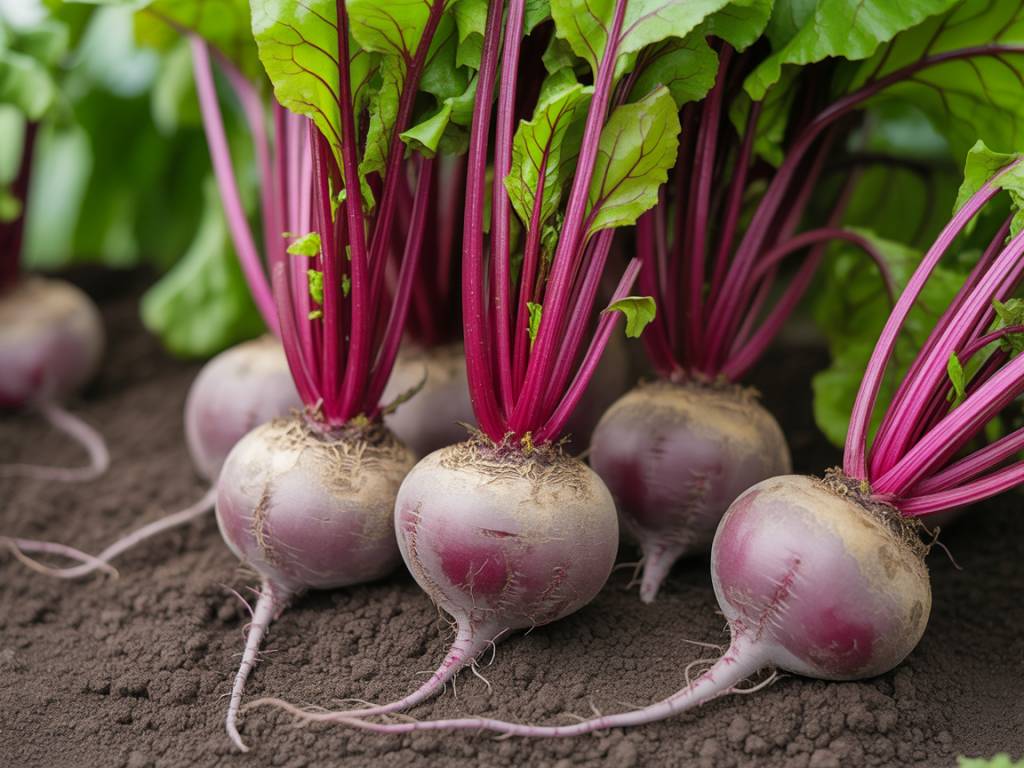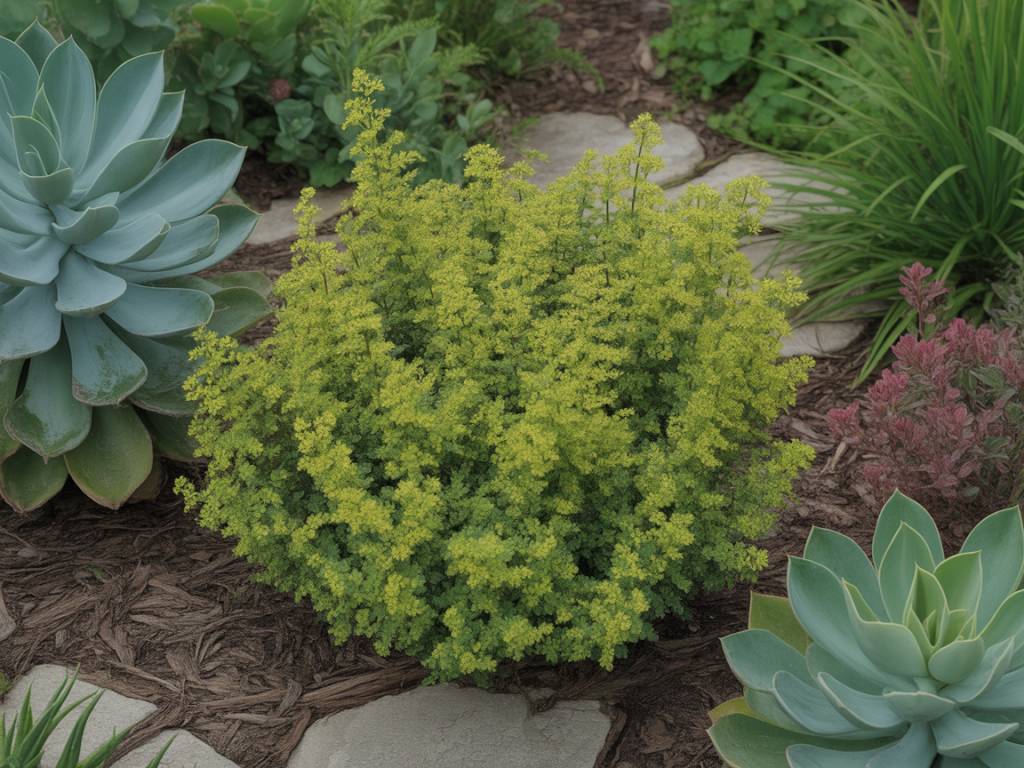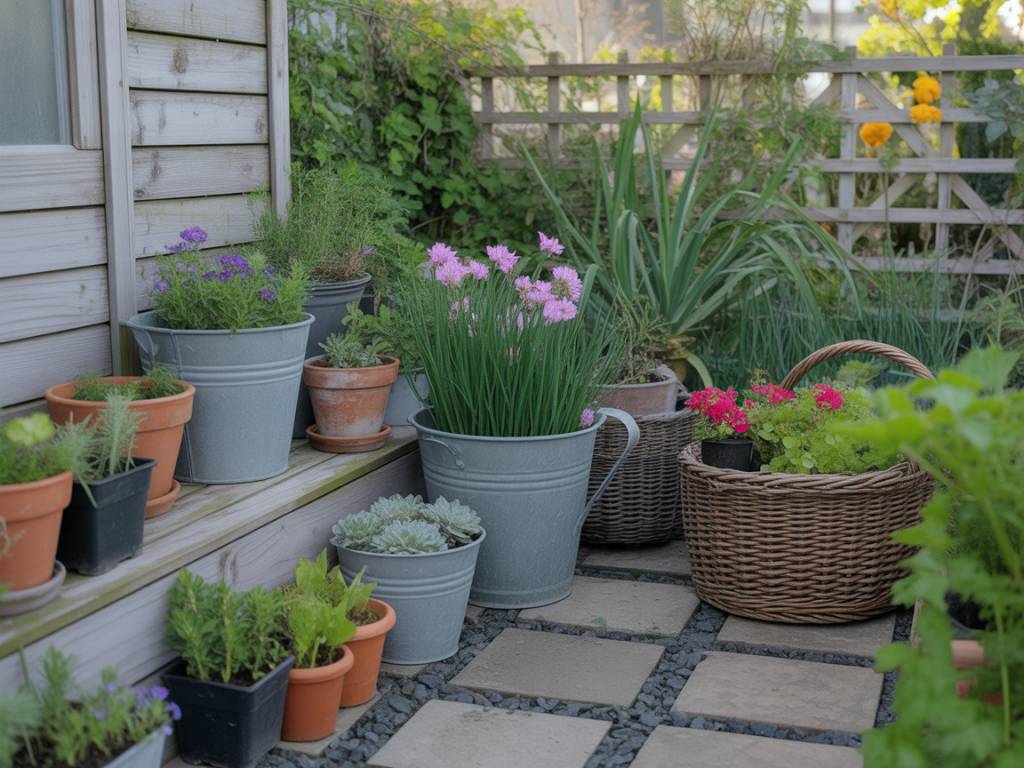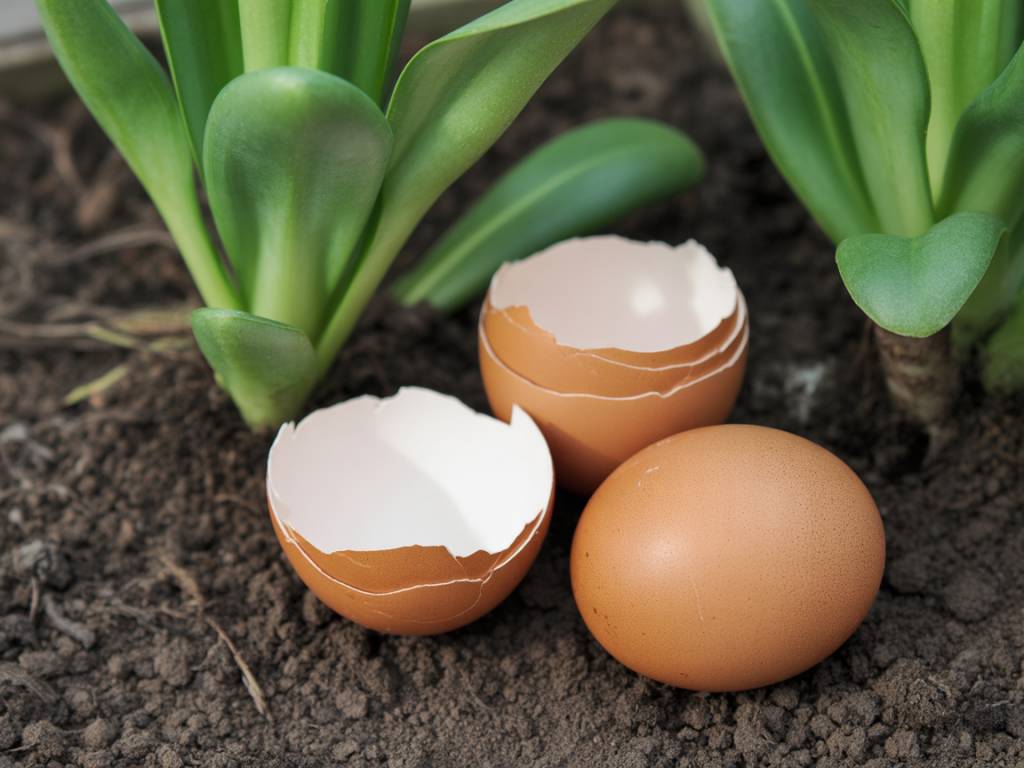Waiting for beetroot seeds to wake up
If you’ve ever sprinkled beetroot seeds into a neat little row, patted the soil lovingly… and then stared at an empty bed for days, you’re not alone. Beetroot can be a little slow to wake up, like a sleepy teenager on a Sunday morning.
Under normal conditions, beetroot seeds take about 5 to 10 days to germinate. Sometimes they pop up faster, sometimes they dawdle for two weeks, leaving you wondering if you did something wrong.
When I was younger, helping my grandmother in the family garden, beetroot rows were always a test of patience. She used to say, “Don’t watch the soil, go make yourself a cup of tea. They’ll come when they’re ready.” Over time, I’ve learned a few gentle tricks to help them be “ready” a little sooner.
In this article, I’ll walk you through how long beetroot really takes to germinate, what’s happening under the soil, and how I speed things up naturally, without chemicals or fuss.
How long does beetroot usually take to germinate?
In good conditions, beetroot seeds generally germinate in:
- 5–7 days in warm spring or early summer soil (around 15–25°C / 59–77°F)
- 7–14 days in cooler soil (around 8–12°C / 46–54°F)
If you’re sowing very early, or into soil that hasn’t quite warmed up, they can push towards the longer end of that range. They’re more cautious than some of the bolder spring vegetables.
One important detail: beetroot “seeds” are actually little clusters, called seedballs. Each seedball can produce several seedlings, which is why your rows sometimes look like beetroot clumps having a party. This means that when one seedball germinates, you may see more than one seedling pop up from the same spot.
What beetroot seeds need to germinate well
If you imagine beetroot seeds as guests at a cosy dinner, they only really settle in when a few basic comforts are in place. These are the main ones.
- Soil temperature: Beetroot will germinate from about 7–8°C (44–46°F), but they’re happiest around 15–25°C (59–77°F). Below that, they’ll sulk and take their time.
- Even moisture: Not soggy, not bone-dry. The soil should feel like a wrung-out sponge. If the top crust keeps drying, germination slows or stops.
- Fine, loose seedbed: Big clods of soil can trap small seeds or leave them sitting in air pockets. Beetroot prefers a crumbly, well-tilled surface layer.
- Moderate depth: Around 1–2 cm deep is ideal. Too deep, and they struggle to reach the light; too shallow, and they may dry out.
- Good contact with soil: The seed needs to touch soil on all sides to absorb moisture steadily. A light firming after sowing helps a lot.
Whenever one of these elements is off, beetroot will remind you by being frustratingly slow. So before we try to “speed things up”, we make sure we’re not unintentionally putting the brakes on.
Why beetroot can be slow to sprout
Over the years, I’ve seen the same few culprits behind sluggish beetroot germination. If your seeds are taking longer than two weeks, have a look at these possibilities.
- Cold, wet soil: Early in the year, it’s tempting to sow at the first hint of sunshine. But if the soil is still cold and heavy, beetroot seeds hesitate. They don’t want to rot before they sprout.
- Soil that dries out between waterings: Particularly in raised beds or containers, the top couple of centimetres can dry out faster than we realise. Seeds start to germinate, then stall.
- Old or tired seed: Beetroot seed keeps reasonably well, but after 3–4 years germination can drop. Your neat row may end up looking more like a dotted line.
- Crusty soil surface: Heavy rain followed by sun can bake the top of the soil into a crust that’s difficult for tiny seedlings to push through.
- Sowing too deep: If the seed has to climb too far to reach the light, it uses up its small reserves of energy before it breaks the surface.
Once I started paying close attention to these little details, beetroot stopped being temperamental and became a lot more reliable. Then I began to experiment with ways to give them a gentle nudge.
How I speed up beetroot germination naturally
Every gardener develops small rituals for coaxing seeds into life. Here are the methods I’ve tried and now use regularly to help beetroot sprout faster, without resorting to anything harsh or synthetic.
Pre-soaking the seeds: a simple overnight spa
This is the easiest and most effective trick I know. Because beetroot seedballs are quite hard and woody, they benefit from a good drink before meeting the soil.
Here’s how I do it:
- Place the seeds in a small bowl.
- Cover with lukewarm water (not hot – just pleasantly warm to the touch).
- Leave them to soak for 8–12 hours, usually overnight.
- Drain them in the morning and sow the same day.
By the time you sow, the seedballs have softened slightly and absorbed moisture, which encourages quicker germination. In my garden, this simple step regularly shaves a few days off their usual sprouting time.
If you forget them and they soak for a full 24 hours, don’t panic; just drain and sow as soon as you remember. I wouldn’t leave them much longer, though, as they need oxygen as well as water.
Using compost tea or herbal infusions
Sometimes I like to be a little more indulgent with my seeds. Instead of plain water, I occasionally use a very mild, strained compost tea or an herbal infusion to soak them.
You can try:
- Weak compost tea, well diluted and carefully strained so there are no particles.
- Chamomile tea, cooled, which some gardeners like for its gentle antifungal properties.
- Nettle tea, very diluted, to offer a whisper of nutrients.
Is this strictly necessary? No. Plain water works beautifully. But I enjoy the small ritual, and my grandmother swore by her cooled chamomile tea soaks, so it’s a tradition that has stuck with me.
Pre-germinating beetroot seeds on paper
If you’re the kind of person who likes to see things happening (I admit, I am), pre-germinating seeds on moist paper can be very satisfying.
Here’s my gentle method:
- Line a shallow container with a layer of damp (not dripping) kitchen paper.
- Scatter your beetroot seeds on top, in a single layer.
- Cover with a second layer of damp paper.
- Place a loose lid or plastic cover over the top to keep in moisture, leaving a small gap for air.
- Keep it at room temperature, out of direct sun.
- Check daily and keep the paper just moist.
Within a few days, you should see tiny white roots emerging from some of the seeds. Once that happens, handle them very gently by the seedball, and either:
- Place them directly into the ground at the usual spacing, or
- Sow them into small modules or cells filled with compost, to plant out later.
This method is wonderful if your seed is a little older and you want to be sure it’s still viable before dedicating a row in the garden.
Warming the soil before sowing
Beetroot is far happier when the soil has lost its winter chill. To give them a head start early in the season, I sometimes gently warm the soil before sowing.
A few easy ways to do this:
- Cover the bed with black plastic or a dark tarp for 1–2 weeks before sowing. It absorbs sunlight and gently warms and dries the surface.
- Use cloches or a low tunnel over the area you plan to sow, creating a mini greenhouse effect.
- Sow in pots or modules under cover (in a greenhouse or cold frame) and plant out later once conditions are kinder.
I don’t use artificial heat in my own garden, simply because I like to work with the seasons, but a sunny windowsill or unheated greenhouse can make a real difference in early spring.
Mulching lightly to keep moisture consistent
Once your beetroot seeds are sown, the next step is keeping that precious top layer of soil evenly moist. A very light, fine mulch can help enormously.
Options that work well:
- A thin sprinkling of fine compost over the seed row, after covering.
- A dusting of sieved leafmould, if you have some.
- An extremely light layer of grass clippings, dried slightly first and used sparingly so they don’t mat.
This doesn’t replace watering, but it slows down evaporation and helps prevent the surface from forming a hard crust. Think of it as a soft blanket over a baby’s cot – just enough to keep them comfy.
Firming the soil gently after sowing
One of the most overlooked steps in seed sowing is simply making sure the seed has good contact with the soil. After covering the seeds with their thin layer of soil, I always run the back of a rake gently over the row, or press lightly with my palm.
This doesn’t mean compacting the bed – beetroot still likes loose soil – but a gentle firming ensures the seed isn’t floating in air pockets. Better contact means better moisture uptake, and better moisture uptake means quicker germination.
Spacing and thinning for healthy seedlings
Because each beetroot seedball can produce multiple seedlings, your row may become quite crowded once germination starts. Crowded seedlings compete for light and nutrients, which can slow down their early growth.
My approach is:
- Sow seedballs about 5 cm apart in the row.
- Once seedlings have their first true leaves, thin them to one strong plant every 8–10 cm.
- Use the thinnings as baby leaves in salads – nothing is wasted.
This doesn’t speed up the moment of germination itself, but it does mean the seedlings that do appear can grow on quickly and strongly, without stress.
Using nature’s calendar: timing your sowings
Sometimes the best way to “speed up” germination is simply to choose the right moment. Beetroot sown into soil that is already pleasantly warm will always emerge more quickly than seed sown weeks earlier into chilly ground.
In my temperate garden, I tend to:
- Start the first sowing once the soil feels cool but not icy to my bare hand – usually mid to late spring.
- Repeat small sowings every few weeks until midsummer, so I always have a friendly succession of roots coming on.
- Avoid very late sowings in exposed spots, as cooling autumn soil can slow everything down again.
If you’re gardening in a cooler region, you might find that sowing just a week or two later than you’d like results in much faster, more even germination, with stronger seedlings that catch up quickly.
A few gentle troubleshooting tips
If you’ve tried some of these techniques and your beetroot is still taking its time, here are a few last things to check.
- Check depth: Gently scrape back the soil in one small spot and see where the seeds are. If they’re deeper than 2 cm, that may be the issue.
- Test the seed: Place a few leftover seeds on damp paper indoors to see if they germinate there. If not, your seed lot may simply be past its prime.
- Watch watering habits: It’s easy to overwater or underwater in our eagerness. Aim for consistent dampness, rather than drenching and drying cycles.
- Protect from pests: Occasionally, seeds are taken by birds or disturbed by rodents. Netting or fleece over the bed can help in vulnerable areas.
Letting patience share the work
Even with all these tricks, beetroot will still ask a little patience of you. And perhaps that’s part of their charm. Those quiet days when nothing seems to be happening above ground are when the real magic is unfolding below: the seed softening, a tiny root searching downward, the first tender shoot turning towards the promise of light.
When I walk past a newly sown beetroot row now, I don’t worry so much about the empty soil. I know I’ve given the seeds the best possible start: a warm bed, a drink before planting, a soft blanket of compost, and a little firm handshake with the earth.
And then, almost always, one morning it happens. A fine green line appears where there was nothing before, and the garden feels a little more alive.
If you try any of these natural methods to speed up your beetroot germination, I’d love to hear how they work for you. After all, every garden has its own rhythms, and sharing them is half the pleasure.





